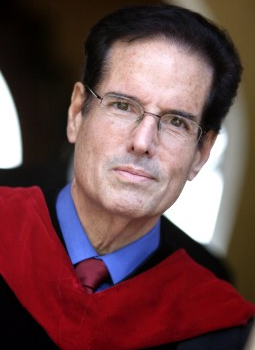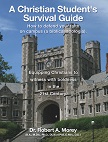Is the Sabbath for Today -- Part 9
By: Dr. Robert A. Morey
This final article in the series gives a biblical-theological approach to the Sabbath, corporate worship, and traces Sabbath-keeping in church history.
- The Sabbath is a concept revealed in the context of the Mosaic covenant. Thus the Sabbath did not appear until Moses’ time. The creation ordinance argument obscures the covenantal “sign” nature of the Sabbath. This is why Sabbatarians have yet to develop the distinctively covenantal character of the Sabbath as a test or sign of covenantal obedience to God (cf. Exod. 31:12-17; Isa. 56:4-7; Deut. 5:11).
- When the concept of the Sabbath was first introduced, it only signified physical rest. It did not have any spiritual overtones at all (Exodus 16). As the history of redemption unfolded, the concept of the Sabbath deepened in its meaning and began to have spiritual significance. The worship of God in private and public slowly became part of the Sabbath.
- If the Sabbath had been instituted since the creation of man, it would have deepened beyond mere physical rest by the time of Exodus 16. Since the Sabbath did not develop spiritual overtones until the later prophets, this reveals that it could not have been observed from the beginning of history. The dynamic unfolding and deepening process of Biblical truth would not have been stagnant from Adam to Moses.
- As the unfolding spiritual character of the Sabbath developed, it came to signify a day of “rest in God,” a rest of faith in God and a day spent in the worship of God.
- But the Pharisees in our Lord’s time externalized the Sabbath and made it a day of gloominess. They manifested a legalistic zeal and attention to the strict outward observance of the day. They sought to undo and to reverse the unfolding dynamic spiritual meaning of the day. They did not see that the Sabbath was essentially eschatological in nature and that it prefigured the Messianic age in which believers would rest from dead works by having a conscience void of offense due to Christ’s perfect work on the cross (Heb. 4:1-16, 10:1-25; Col. 2:14-17).
- The Lord of the Sabbath has ushered in the age of the Sabbath. The shadow of a weekly Sabbath is no longer needed because that which it prefigured has come.
- Weekly Sabbath-keeping is part of the Old Testament “promise” and has no place in the New Testament “fulfillment.” Sabbath-keeping has served its purpose and, just as the scaffolding around a building is taken away once the building is completed, so the weekly Sabbath has been done away by Christ, the Master-Builder of the New Temple, which is the new Israel of God, the Church.
- We look forward to a greater fulfillment of the Sabbath age. It pre-figures the saints’ rest in Heaven and the eternal state.
- Sabbatarianism is retrogressive and reactionary. It tries to stop the unfolding dynamic of the eschatological character of the Sabbath. It attempts to turn back the hands of the clock of redemptive history by keeping the shadow and ignoring the reality which cast the shadow. Let us go on in faith and embrace the reality which cast the shadow of the weekly Sabbath.
Conclusion
The Sabbatarian position cannot stand up under close exegetical scrutiny. In its place we need to develop a practical theology of our corporate Gospel duties in the light of passages like Hebrews 10:25.
- The “Lord’s Day” has historically been identified with Sunday, called in the New Testament “the first day of the week,” which is the day Christ rose from the dead. That this is true has been demonstrated to such a degree in debates against the Adventists by such writers as Walter Martin, that we will not here develop the argument (Walter Martin, The Truth About Seventh-Day Adventism(Zondervan: 1965). The fact that Sunday is specifically referred to in the New Testament as mia sabbaton (literally, “the first after the Sabbath”) should raise serious questions about the wisdom of identifying Sabbath and Sunday. The New Testament clearly designates Sunday as a day other than the “Sabbath.”
- On Sunday morning, Christians historically have assembled for worship, fellowship, instruction and the ordinances of Baptism and the Lord’s Supper. This is obvious from the post-resurrection appearances of Christ (all of which took place on “the first after the Sabbath”), the data in the Book of Acts and the subsequent history of the early church.
- What we are to do when we assemble is given in the New Testament by way of example and command. The examples and commands found in Acts 2:41-42; 20:7; I Corinthians 5:4; 11:2, 23ff.;14:26; 16:2; and Hebrews 10:25. These passages delineate the essentials. We must attend the gathering together of the saints to hear preaching, participate in the ordinances, give offerings, and minister to each other in the context of the Body of Christ. In the light of these New Testament teachings, there are several theological reasons (such as the first day being the time of the resurrection and Pentecost) for Christians preferring to meet on Sunday. But there are no Biblical directives which state that it is sin for the brethren to meet together some other day. The truth is that the New Testament emphasizes our corporate duties, not a day on which those duties must be fulfilled. Sin is committed if these duties are not fulfilled in the Christian’s life, but there is no indication that sin is committed by fulfilling these duties on the “wrong” day.
- If you faithfully fulfill your corporate New Covenant duties on the day of worship in the local church where you are a member, then you are free to do whatever God leads you to do. No one has the right to set up extra-Scriptural rules regarding what can and cannot be done on the worship day (Col. 2:16). Your conscience is to be under God and His Word and not in bondage to the traditions or laws of men.
- Our assembling together should be a time of great joy and rejoicing, for Christ has ushered in the “Year of Jubilee” and has proclaimed liberty throughout the Earth. Our times together should be filled with joy and Christian fellowship. The resurrection of Christ signifies hope, life and joy. These things—not fear or gloom—should characterize our corporate gatherings.
- Since Christian liberty (with reference to the observance or non-observance of days) is clearly to regulate such external matters, no Christian should judge another Christian in areas of personal freedom (Rom. 14:4-23; Col. 2:16; Gal. 5:1).
- The early Church did not see any relationship between the Lord’s Day and the Fourth Commandment. The Sabbath was viewed as a ceremonial law fulfilled in Christ (Phillip Schaff, The History of the Christian Church, Vol. I, pp. 477-479; Vol. II, pp. 202-205; Vol. III. pp. 378-385).
- The Middle Ages saw the union of church and state, beginning with Constantine. The Sabbath was introduced by theocratically-minded religious and civil leaders who drew civil laws from the Old Testament. Sabbatarianism had its greatest day in the scholastic period of Roman Catholic theology (R.A. Morey, Exclusive Psalmody, Research and Education Foundation, 1975, pp. 41-56).
- The pre-Reformers and early Reformers threw out the medieval Catholic Sabbath and returned to the theology of the early church (Dr. Richard Gaffin, Calvin and the Sabbath, WTS thesis).
- The Puritan period continued the tradition of church-state union and in this context the Sabbath was re-established in their seventeenth century theocracies. It was a return to scholastic Catholic thinking.
- Today, only within the Reformed community is there any serious attempt to revive the Christian Sabbatarian position. To some, it has become a sacred cow or a theological shibboleth. At the same time, Reformation studies on the position of the early Reformers are reviving the Continental Reformed position which is the position of this author.
- Cultic Sabbatarians often make seventh-day Sabbath-keeping essential for salvation. This reveals that they are preaching salvation by works instead of by grace. They like the Pharisees go about seeking to establish their own righteousness. Their judgment is just.
Conclusion
The Sabbath was a ceremonial law which pointed backward to Creation and forward to salvation by faith. It was ceremonial in nature, function and attributes. The Continental Reformed position is thus confirmed as the best understanding of the Biblical data.
John Calvin, Institutes of the Christian Religion, Book II, Chap. 8, sec. 28-34.
From Sabbath To Lord’s Day, ed. D. A. Carson, (Zondervan: Grand Rapids, 1982). Richard Gaffin, Calvin and the Sabbath, unpublished Th. M. thesis at Westminster Theological Seminary.
James Hessey, Sunday: Its Origin, History and Present Obligation (Cossell: London, 1889). Gary North, “The Economics of Sabbath Keeping,” in R. J. Rushdoony’s The Institutes of Biblical Law, (P & R: 1976) pp. 824-836.
Hiley Ward, Space-Age Sunday (Macmillan: 1960).
Robert Morey, An Examination of Exclusive Psalmody (New Life: 1974).






































